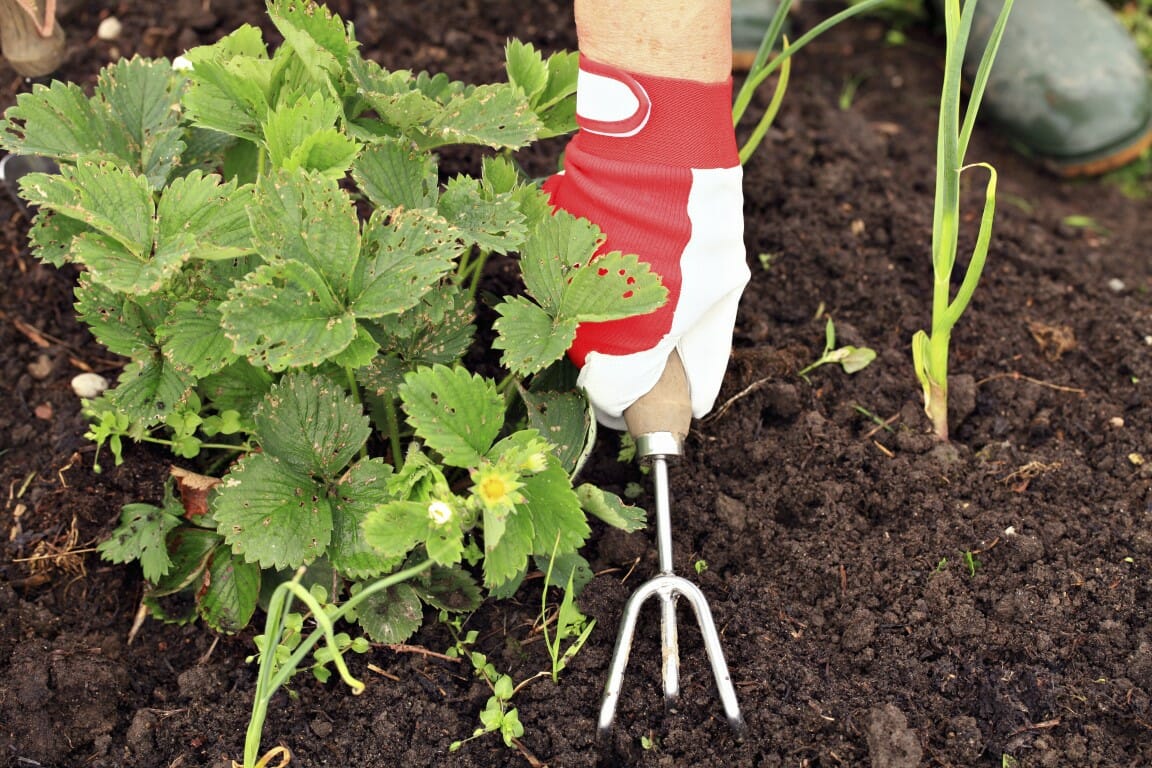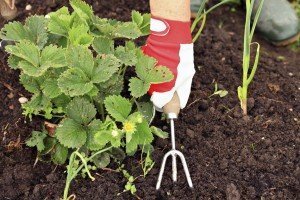
Renovating Perennial Beds
Dr. Leonard Perry, Extension Professor
University of Vermont
 One of the main problems I hear from perennial gardeners, and one I have myself, is perennial beds gone weedy. Or, as friend likes to say, they’ve gone “natural” and reached their “goldenrod years”. Where I used to have hundreds of perennials, all nicely organized and labeled in neatly edged beds, now I only see the hardiest survivors poking through goldenrods, nettles, grass growing in from the edges, and a whole host of other invaders. If life has had other priorities for you than keeping up with weeding, and your perennial bed has become overgrown with less desirable plants, it is time to think about renovation.
One of the main problems I hear from perennial gardeners, and one I have myself, is perennial beds gone weedy. Or, as friend likes to say, they’ve gone “natural” and reached their “goldenrod years”. Where I used to have hundreds of perennials, all nicely organized and labeled in neatly edged beds, now I only see the hardiest survivors poking through goldenrods, nettles, grass growing in from the edges, and a whole host of other invaders. If life has had other priorities for you than keeping up with weeding, and your perennial bed has become overgrown with less desirable plants, it is time to think about renovation.
One option is just to live with your new beds and work with them. Actually, all the “wildflowers” that have seeded in, plus the remaining tough daylilies and phlox and such look pretty good—from a distance. I have hundreds of daffodils interplanted in these beds, so to totally dig up and renovate would destroy their spring effect created over years. To go with this option, you need to appreciate the “natural”, seemingly unorganized and “messy” meadow effect. The diversity of plants actually is good ecologically as it harbors a host of beneficial insects, plants for native pollinators, and food for birds.
To work with such overgrown beds, I merely weed whack them to the ground in late fall so I can enjoy the cheery bulbs come spring. For such beds I then “edit” out the worst offenders in early summer as they start to take off, and I can tell what perennials I planted, and what perennials nature put there. For this, use a heavy-duty hoe, or perhaps perennial spade.
If you want to reclaim your beds though to their former organized glory, just with “your” perennials and not ones from nature, you can do a thorough weeding if they’re not too far out of control. If it has been several years though, and they are beyond redemption, you’ll need to renovate. This begins with assessing during summer what is there that you want to save, and marking them with stakes for digging the following spring. Peonies are an exception—they should be dug in fall and either replanted in a holding area elsewhere, or potted and overwintering in a non-freezing location.
If you want to go about the renovation properly, take some pictures through the summer that you can study this winter. Measure the beds, and roughly draw them on graph paper so this winter you can plan your new plantings. Of course make a list of those perennials you’ll be saving, so you know what you need to purchase this next season. Note how big they are, and if you’ll be able to divide them.
I’ve found that if perennials are totally invaded by grass roots, or roots of invasive perennials (like the silver banner grass, goutweed, reed canary grass), it’s best to just discard them and start over. Otherwise you’ll need to divide up such perennials to the smallest portions, sifting through their roots for any invasive roots. You’ll be sure to miss some, as I have, and end up in a few years with the same weedy problems.
Fall is a good time for a soil test (kits are available from local Extension offices and some garden stores), so you know what nutrients to add next spring. If you need to add lime to the soil to make it less acid, fall is a good time as it takes a few months for this to work.
You also can begin in fall, after grass stops growing, edging the beds with edging tool (manual or electric) or even square-tipped spade. I often start by weed trimming the edges so I can see better where I’m edging, and doing so more easily and in straighter lines.
 Once you’ve analyzed your beds during the growing season, and made your plans during winter, it’s time to go at the beds when you see growth starting in spring. If you have one or more very large beds, and you want to get the job done quickly or don’t have lots of time, you might consider hiring a professional. Most state associations (such as greenworksvermont.org) have lists of certified professionals that have passed a rigorous test of their knowledge. Or, for large beds if reworking them yourself, unless you have lots of energy or help, consider tackling the bed in sections. This way it won’t seem overwhelming.
Once you’ve analyzed your beds during the growing season, and made your plans during winter, it’s time to go at the beds when you see growth starting in spring. If you have one or more very large beds, and you want to get the job done quickly or don’t have lots of time, you might consider hiring a professional. Most state associations (such as greenworksvermont.org) have lists of certified professionals that have passed a rigorous test of their knowledge. Or, for large beds if reworking them yourself, unless you have lots of energy or help, consider tackling the bed in sections. This way it won’t seem overwhelming.
First, dig out all those perennials you’ve decided to keep. Place in the shade under burlap or similar if replanting very soon, otherwise “heel them in” temporarily in another holding bed, or even in pots, until ready to replant.
The next step is the most time-consuming but essential—digging out all the rest of the plants, turning the bed with a fork to loosen it, then sifting the top several inches of soil for any weed rootlets. You can buy sifting screens, or make one simply with a wood frame about one foot wide and two feet long, with coarse hardware cloth wire mesh stapled to the bottom. Tilling the bed instead will simply rebury these weed roots, and divide them up so you have even more perennial weeds! Of course there will likely be weed seeds in your soil, but mulch later and weeding or a hoe will keep these under control.
For those plants you remove and weed roots, don’t dump them into nearby fields if you don’t want them to take root in these areas, nor near waterways where they can colonize stream banks. Unless you have a really good and “hot” compost pile, don’t dump roots there either as they can survive and reinfest other beds later.
Add any nutrients and gently rake them in. If you didn’t get a chance to test the soil, you might just add an organic, balanced fertilizer (such as 5-3-4). An inch or two of compost (well-rotted, free of weed seeds) should be added, more if the soil is poor (sandy, clay). This helps soil microorganisms, improves water-holding as well as drainage, and provides some nutrients. Most perennials don’t need much nutrition. Too much fertility can make them grow only lush foliage with few flowers.
Divide and replant any perennials you saved, and put in new ones. Beware of “gifts” from neighbors, and be careful with plant sales—know what you are buying. Often there you’ll find those very invasive perennials that are so easy to divide. If you’re unfamiliar with perennials, take along a reference book, catalog, or even plant app (increasingly there are ones for this) for a smartphone, or look them up online on such handheld devices.
Water in well (deeply less often is better than frequent sprinkling). Mulch with a couple inches of bark, shredded leaves (whole leaves can compact and keep air and water from the soil), pine straw, or similar. While some mulch is good, more is not better for many perennials that like to spread. Mulching these, such as yarrows, will kill them out over time and keep peonies from blooming. To avoid having to start over again, make sure to keep on top of weeds.
Spring and early summer is a key time to weed as much of the soil is bare (perennials are just starting to grow) and the light makes weed seeds germinate. A tip on using the hoe on weeds— just break them off near the surface. If you dig too deeply, you’ll bring more weed seeds to the surface where the light will make them germinate. Since weeds need light to grow, and weed seeds to germinate, planting large perennials or making sure they cover the soil when mature, will minimize the weed pressure, as does mulch.
Receive your complimentary Relocation guide and magazine

